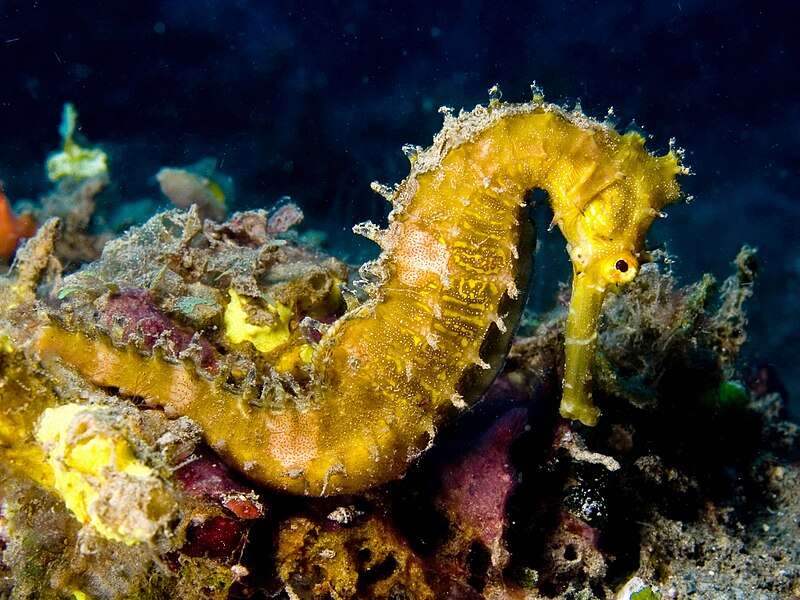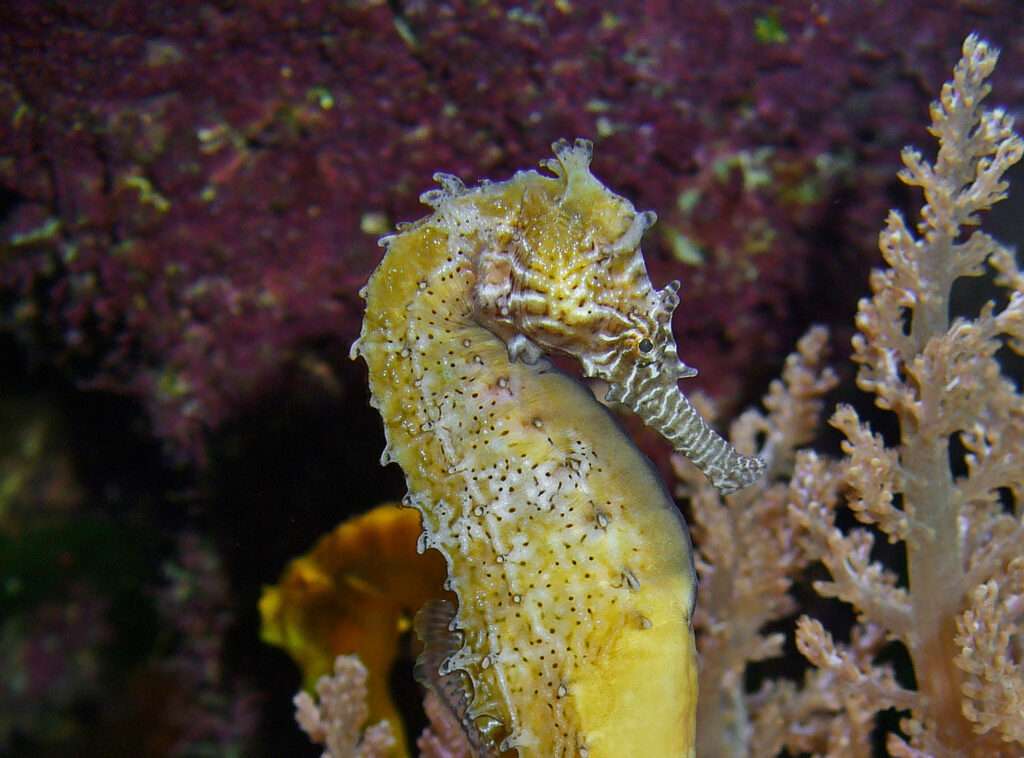
The little marine fish known as the spiny seahorse, also called the thorny seahorse, is found in the Indo-Pacific region. The IUCN has categorized it as a vulnerable species. This unique seahorse has long, dark-tipped spines, a color pattern that varies according to the environment—it may be white, grey, greenish, yellow, brown, or even burgundy-red—and occasionally saddle-like markings and tiny darker patches and blotches.
Habitat
The Indo-Pacific region is home to the spiny seahorse, despite its relative rarity. The Great Barrier Reef, the Timor Sea, Port Stephens, New South Wales, and the area south of Ashmore Reef have all had reports of it in Australia. Japan, Papua New Guinea, New Caledonia, Bali, Indonesia, and Bali are other places where it is present. The species thrives in seas between 10 and 95 meters deep, usually at depths of less than 15 meters. This species is present on a variety of substrates, including sponges, soft corals, weedy rocky reefs, and seagrass beds in addition to other places.

Description
This fish can grow to a length of 15–17 cm. The body is long and elongated, with thorns covering the entire surface. These have prehensile tails that are of uniform size, are pointed, and have dark ends. Till the coronet, which has four or five, the long thorns on the trunk are still there. The skull has many spines as well, with the forehead, cheekbone bases, the nose, and the area over the eyes having the most. Long and tapered in form, the snout is. The body’s color can be anything from grey to cream, brilliant yellow to green or red, or even brownish, depending on the environment. On the back, side, or both, it could be simple or have a distinctive pattern. Typically, the nose will have one or more tiny white lines going down it.
Biology
The carnivorous spiny seahorse eats small crustaceans and other planktonic creatures as part of its diet. It is ovoviviparous, and the female transfers her eggs into a sealed pouch beneath the male’s abdomen using an ovipositor. The eggs in the ventral brood pouch are taken care of by the male. In the latter, each fertilized egg is surrounded by capillary-rich villi that serve as an artificial placenta to nourish the growing embryos. The male fertilize the eggs inside the pouch and physically protects them as they develop. He also oxygenates the embryos, osmoregulates them, and might give them some food until the babies are born. Puppies are ejected from the pocket as they reach adulthood and have complete autonomy as they develop.
Conservation
The IUCN has H. histrix on its list of threatened species. Over the past 10 to 15 years, populations are thought to have decreased by more than 30%. Its population is threatened by bycatch in the shrimp fishery as well as targeted harvesting for use in traditional medicine and the aquarium trade. The species’ favourite rocky shoreline habitats for seagrass are also disappearing. Imposing export limitations would have little impact on wild populations since the majority of seahorses are caught as bycatch.
Bycatch, habitat loss, and exploitation for international trade are likely to be to blame for population size declines. The key elements causing the decline and fragmentation of seagrass beds include eutrophication, sedimentation, coastal development, dredging, and invasive species. Future occurrences of all of these threats should be anticipated. It is well known that this species is regularly caught as bycatch in non-selective fisheries, such as fish and shrimp trawls, which occurs across the range of the species and harms the environment for those seahorses even in the absence of trade demand. The usage of shrimp trawls is a serious threat to the Hippocampus histrix species. The species is caught in various non-selective fisheries, such as shrimp trawls, both directly for trade and as bycatch. There have been reports of the thorny seahorse trade all over the range of the species. Seahorse availability is currently dropping, as it has been in international trade since the middle of the 1990s, according to fishermen and merchants.
Table





